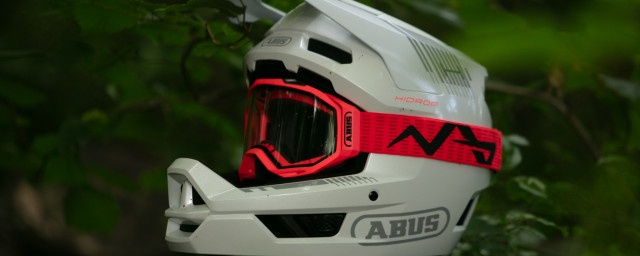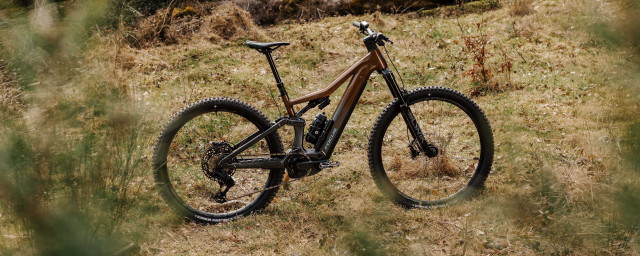SRAM’s latest Code Ultimate Stealth brakes push the lever design boundaries while retaining all the good bits we love about the braking system. Even though there’s nothing particularly new here (well, apart from the shape, aesthetic and HS2 rotor), this iteration has become my favourite thanks to the performance. It is rather expensive and heavier than other carbon-clad brakes and needs a precise setup and tune to work at its best. It's a very good system and has earned its spot as one of the best mountain bike brakes on the market. Scroll down for more test details.
- SRAM mountain bike brakes 2023 - Level, G2 and Code models
- How to bleed SRAM, Hayes and Magura brakes
- How to clean disc brakes on a bicycle
SRAM Code Ultimate Stealth brakes - Technical details
Alongside the release of the XX and XO Transmission drivetrains, SRAM launched the Ultimate Stealth brakes, catering to both cross-country and gravity audiences. The new levers grabbed attention with their new design bringing the reservoirs and hoses much closer to the bar than before. This may do very little in terms of performance but it was carried out to improve aesthetics and play even better with internal cable routing systems that flow through the headset. The shape may also be a move to preempt mountain biking’s adoption of fully integrated cables and hoses that enter directly into handlebars.
Elsewhere, the Code Ultimate Stealth is pretty similar to previous designs, including the SwingLink tech which promises less free lever stroke. It also uses a special cam system that translates into less lever movement to push the pads into the rotor. This is without affecting modulation, says SRAM, ensuring a flat leverage rate.
As the brand’s top-end brake, it gets all of the adjustments you can expect, including tool-free lever reach adjustment and contact-point adjustment. There are also some proper fancy carbon levers complete with the Lever Pivot Bearing which is essentially a lever that rotates around a small bearing for a lovely and smooth feel.
SRAM goes very deep into this brake’s tech as it’s designed with a Timing Port Closure which makes up the connection between the lever cylinder bore and the brake’s reservoir. This is a cup seal that travels over this area and closes a port which then pressurises the system in order to achieve consistent and powerful braking. There’s then an expandable bladder that’s been included to reduce trapped air in the system and improve back pressure relief.
As a full-time user of sintered pads, I’m chuffed to see them as standard on this brake.
The front brake with its hose but without the clamp and caliper mounting hardware tips the scale at 291g. That’s 32g weightier than Hayes’ Dominion T4 and 19g heavier than a Shimano XTR with a four-piston caliper. But it is lighter than non-carbon-bladed brakes such as TRP’s Trail EVO brakes, but not by an awful lot with TRP’s offering weighing 302g. So despite the carbon lever resulting in some weight savings, if that’s what you’re after, the Code Stealth Ultimate may not be your first choice. Although, it’s definitely lighter than the SRAM Code RSC which weighs around 326g.
SRAM Code Ultimate Stealth brakes - Installation
The setup is just like any other top-end SRAM brake and is rather easy to install; though the lever clamps can be a bit of a faff. However, once the faff has been conquered, it’s fit and forget – allowing for free adjustment on the fly
The Code Ultimate Stealth uses Bleeding Edge tech that adds an extra step to the bleeding process which makes bleeding more effective and much cleaner.
However, for a while, I was never fully satisfied with the lever feel after the first bleed, and multiple bleeds thereafter. The lever throw was good, but there was always a slight sponge, regardless of the fact that there was no air in the system. To beat this, I went as far as to clean and lubricate the pistons, after a final bleed, which solved the issue. It’s a bit of a shame that this was required, given that many brakes work beautifully out of the box but if you’re equipped to install brakes and trim hoses, you’re already sorted to clean some pistons.
SRAM Code Ultimate Stealth brakes - Performance
Once installed, the Code Ultimate Stealths more than looks the part. They are a premium product and SRAM has done an excellent job in making them look special.
While SRAM has been clever in both predicting the future and catering to the growing abundance of internal headset and handlebar cable routing (which I’m certain will look mega tidy), it doesn’t come without a small expense, especially to those who run regular internal or external cable routing. The way the new reservoir shape points the cables in towards the bar means that the cables are much closer, too, so the cables rub. For most, it’s a simple case of putting up with it or slapping on some Helitape. For others, this could be the permanent marring of a lovely handlebar.
Like most of SRAM’s other brakes, these rely on the Matchmaker system that integrates the shifter and dropper lever into the brake’s clamp, which furthers the slick cockpit that comes as a result of that new lever shape. Those who rely on the extra adjustment that band clamps offer will be a little disappointed though. That’s again, because of the reservoirs being located so closely to the bar, leaving little space between the brake and the bar. .
However, brakes are about performance and because not much has changed with the internals, the Code Ultimate is very much the same as SRAM’s older models, which is no bad thing for fans of the brake’s exemplary modulation. But through the little changes that have been made, namely the use of the HS2’s expanded thickness, initial contact of pad to rotor feels much snappier than brakes prior. This is also aided marginally by the stiff and direct carbon levers.
As such, lever feel provides an almost perfect mix between Shimano’s on/off power delivery with the modulation that SRAM brakes are renowned for. On top of that, lever feel is improved as the bite point is more pronounced and it offers an air of increased power, while technically the brake is unchanged.
SRAM’s specification of sintered pads not only pleases me because that’s what I prefer to ride all of the time but they help resist fade rather well while keeping performance consistent throughout varying conditions. When pushed down trails that test brakes more rigorously than most, the Code Ultimate Stealth experiences little to no change in power delivery. However, when wet, they can get a little vocal.
The carbon lever feels just like SRAM's existing levers, which has always proved good in the dry but they can get slippery when wet.
SRAM Code Ultimate Stealth brakes - Verdict
The Code Ultimate Stealth is SRAM’s top-tier mountain bike brake and it's mighty expensive as a result. That said, this is a brake for those folk who aren't afraid to splurge and want some proper sexy-looking and performing brakes.
But you can get comparable performance for considerably less and we can’t talk about SRAM without bringing Shimano into the mix. The Japanese brand’s XTR BR-M9120 with a four-piston caliper will set you back £245 an end which poses a serious saving against the Code Stealth Ultimate while getting somewhat similar features and lighter system weight. However, as a Shimano brake, its lever feel is very different from SRAM’s and it doesn’t get that cool look or opportunity for unrivaled tidiness.
The Hayes Dominion T4 is a worthy contender, too, coming with carbon levers and cool weight-saving measures. It’s also built with some maintenance features that make bleeding and general setup super easy, although with a couple of extra steps. These will set you back £340, £20 more than the Code Stealths.
All in all, the SRAM Code Ultimate Stealth brakes are for those who want the sleekest of cockpits but without sacrificing SRAM’s famous modulation. Looks aside, when paired with the HS2 rotors, these are easily the best SRAM brakes currently available – granted you nail the set-up and installation process. While the brakes did need an extra touch of TLC in order to achieve the best performance, they’re not for those who are looking to cut weight from their rigs.


















Add comment